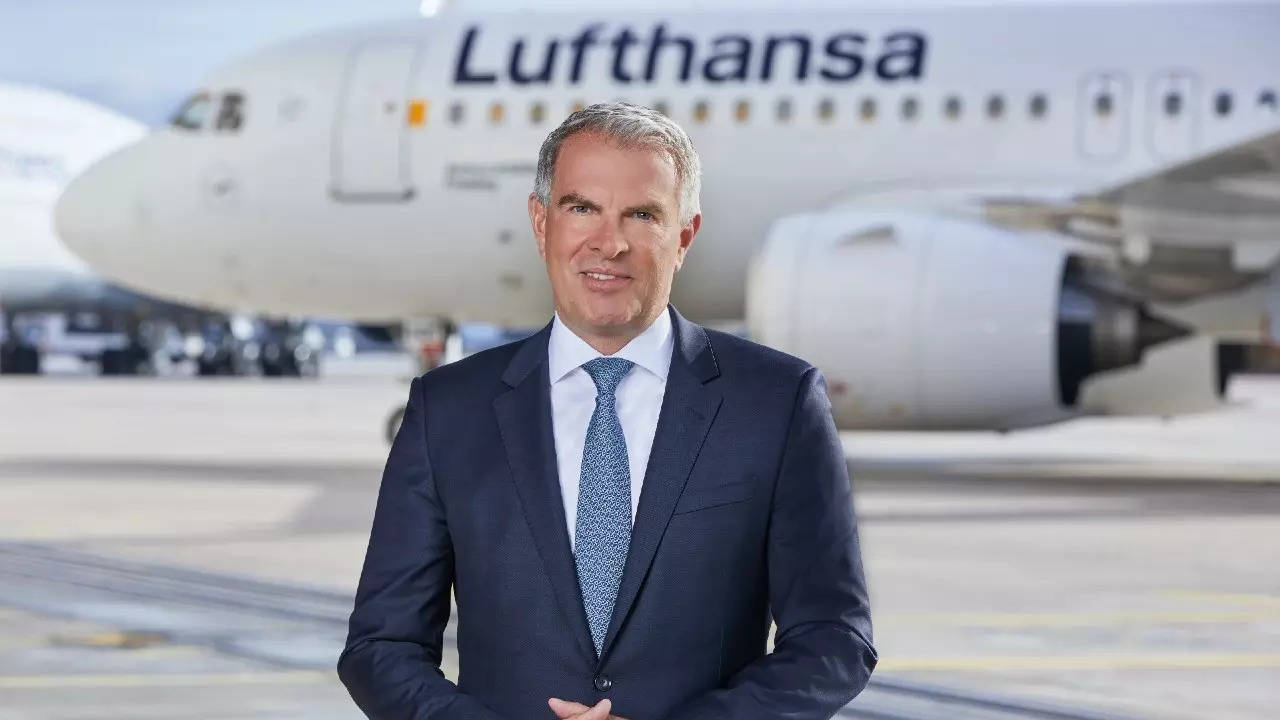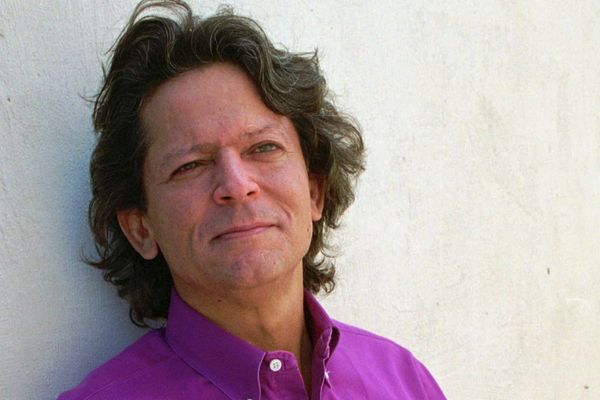
MUMBAI: The maximum city last week witnessed a very high profile meeting of global airline heads ever in India, when Tata Sons and Air India chairman N Chandrasekaran conferred simultaneously with Singapore Airline (SIA) CEO Goh Choon Phong and Lufthansa Group chairman & CEO Carsten Spohr to chalk out the Maharaja’s ambitious expansion plans.
While SIA will hold 25.1% stake in the new AI, the German mega carrier plans to deepen the existing partnership with the Maharaja in several areas, including an expansion of code shares and potentially including engineering and aviation training.
During his India visit, Spohr exclusively met only TOI and spoke about the mega collaborative plans in the works. “India has not had an adequate seat at the (global) aviation table in the past. Air India with SIA on one side looking east and Lufthansa Group looking west has potential for something big, something that can change Indian aviation. As a partner it would be a privilege for Lufthansa Group to help bring AI to its rightful place on the global stage. Air India deserves it. India deserves it,” Spohr, who as a Lufthansa pilot flew the Airbus A340 to Bengaluru several times between 2001 and 2006, told TOI.
According to him, the current high demand could enable the new AI “set to redefine its role” long term in the Indian market. “Until now, too much traffic between India and Europe and the USA used other hubs; for example, in the Gulf region. India and its flagship carrier AI should have a higher share of their own aviation market, one that will become the largest in the world,” said Spohr.
India and AI are also “well-positioned” to be a further hub and a hub airline for traffic between Southeast Asia, the Southwest Pacific, and Europe. “We are the commercial partners towards the west and Europe, and SIA the commercial partner towards the east. This is a very strong triangle,” added Spohr. Lufthansa Group has deep ties with US giant United Airlines and will “talk to our trans-Atlantic partner about possibly becoming the missing corner to turn it from a triangle to a rectangle. It helps to have a strong partner in a strong US market to be successful.”
Lufthansa Group is also looking at other business opportunities with the new Air India. “We own a very large aviation training company for flight attendants and pilots. We have many cargo flights. With a healthy and growing Air India, I can see many growth opportunities. Lufthansa Technik has become number one in the world by being present in many parts of the world, not just Europe. If Air India is looking for engineering support, Lufthansa Technik could possibly provide it,” Spohr said.
Airline partnerships usually grow slowly, starting with mutual access to each other’s frequent flyer programs, followed by code-share flights, joint fares, and can potentially lead to a joint venture including “metal neutrality”. Metal neutrality means that the carriers in an airline partnership act as though they were one. Such a move is subject to approval by anti-trust authorities.
For passengers, an airline partnership like this means a seamless travel experience from, say, Patna to Toulouse (France), Las Vegas (US) or Jakarta (Indonesia). They will buy one ticket, which will include Patna-Delhi/Mumbai-Frankfurt/Munich or San Francisco or Singapore and back on this route on Air India. Between these hubs and their destinations, they would be able to fly on Lufthansa, Air India and SIA.
Metal Neutrality among partners, on the other hand, increases the commercial benefit to the partner itself as market potentials but also risks are shared. “Once you include flights by Lufthansa and SIA in one commercial partnership with Air India you could eventually achieve metal neutrality and then it does not matter which airline is flying,” Spohr said.
As Air India launches more international flights to Europe, it would need to create more connection opportunities in an enhanced partnership. Since no airline, no matter how big it is, can fly everywhere, enhancing networks means connections through partnerships with other carriers becomes crucial. “AI has SIA and we can be a strong ally as well. No airline can do it alone – everyone needs partners,” Spohr said.
Carsten Spohr is planning to be back in Mumbai with his top management team in March. “There is no other country that I have visited twice within just four months”. Lufthansa Group, Tata with Air India and SIA have agreed to continue talks between now and then. “The atmosphere of our talks is very good and I am confident we will see significant progress.”
Lufthansa was fully privatised in the mid-1990s. At the time Germany decided to privatise large government-owned companies across sectors like telecom, postal and aviation.
Asked what is the biggest challenge for Air India that is now back as a private company, Spohr said: “The cultural change; When a state-owned company becomes a private one you have to not only face but embrace competition 24/7 to earn your cost of capital by having an adequate return. Surviving and succeeding in the market is something you have to fight for every day in our industry as a privately owned company. However, turning private has been key in making us today the number one airline group in Europe and number four worldwide. Clearly, a new Air India has the potential to get off to a flying start and once again become a global player on its own.”
Lufthansa and group airline Swiss have experienced the fastest recovery in their international markets on flights to and from India. “We went to 100% of flights within half a year after India again allowed regular international flights,” Spohr said.
Combined, both airlines are the largest operator to India with 56 weekly flights planned by next summer between India and Lufthansa Group hubs in Munich, Frankfurt and Zurich. But the German mega-carrier is already looking into enhancing its network with additional Indian destinations as well as additional flight frequencies from Europe to Bengaluru. And maybe Lufthansa Group airline Austrian, which stopped flights to India some years back, could make a comeback with its flights from Vienna, Spohr said. “We will see – India would be a wonderful addition to the Austrian network.”
In June 2020 the German government again bought a share in the company as part of a financial stabilisation programme granted to help weather the financial fall-out from the coronavirus crisis. As Lufthansa Group quickly repaid all loans, the government sold its shares in September 2022 and the company became fully privatised again. This generated a profit for the German taxpayer of more than Euro 1 billion. “We were very grateful for the state support but it was our immediate goal to return these stabilisation packages’ worth billions as soon as possible. And we did in the record-time of just under 18 months,” Spohr said.
In the meantime, state aid for Swiss has also been repaid with Brussels Airlines and Austrian Airlines scheduled to follow suit by the end of this year. “This enormous effort always followed a clear objective: We rather be indebted to the capital market than to our home countries’ taxpayers.”
Lufthansa Group plans to invest over 2 billion euros every year on the renewal of its fleet. The order book comprises more than 200 state-of-the- art, fuel-efficient aircraft like the Airbus A350, the Boeing 787, the Boeing 777-9 or the Airbus A320neo which will be delivered until 2030. “Simply said it means we are adding a new aircraft every two weeks,” said Spohr.
Additionally, Euro 2.5 billion will be invested in products and services to further improve customer experience. Apart from revamping the Lufthansa customer app with a number of new features and increasing essential digital touchpoints for customers, Lufthansa will introduce brand-new seats in First, Business, Premium Economy and Economy Class. “In total, we will be replacing 31,000 seats, primarily at Lufthansa and Swiss. “This without a doubt is the biggest investment, the largest fleet and premium product renewal in the history of our company,” said Spohr.
New planes as well as a wide range of premium products and services follow a clear goal, Spohr said. “We do not simply want to return to our pre-pandemic status quo from 2019 but once again set the standard in our industry.”
Lufthansa Group had last week raised its earnings forecast for 2022 from more than Euro 1 billion to Euro 1.5 billion euros. “We continue to see strong demand for air travel. Average yields for our airlines remain well above pre-crisis-level. Lufthansa Cargo and Lufthansa Technik are expected to achieve record results in the current fiscal year,” Spohr said.







